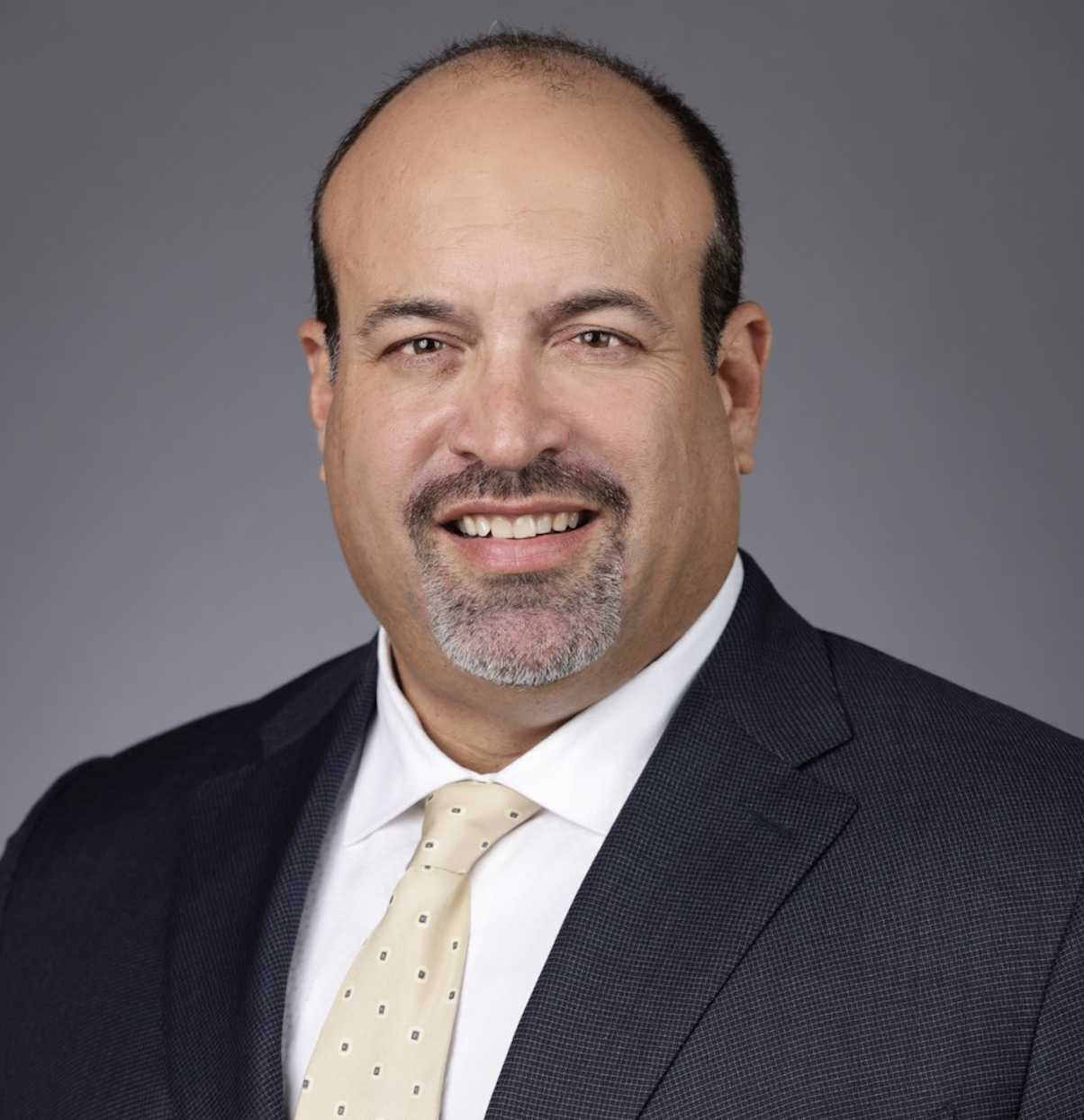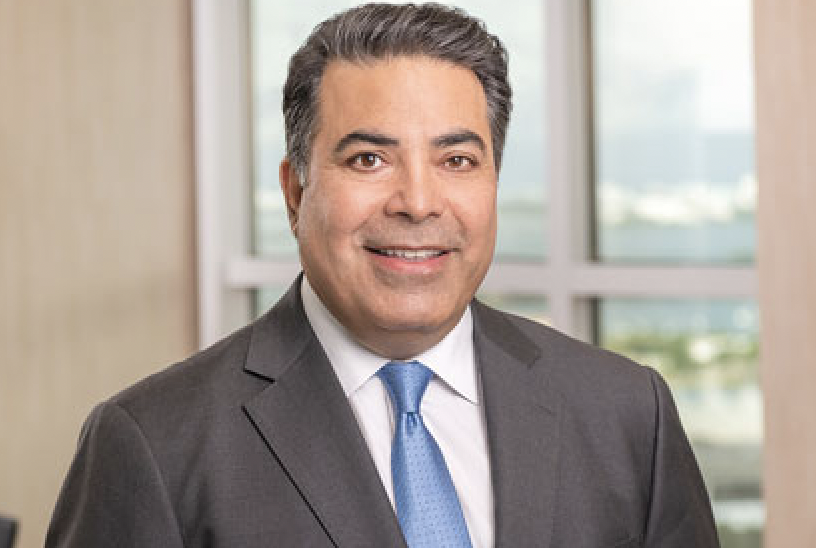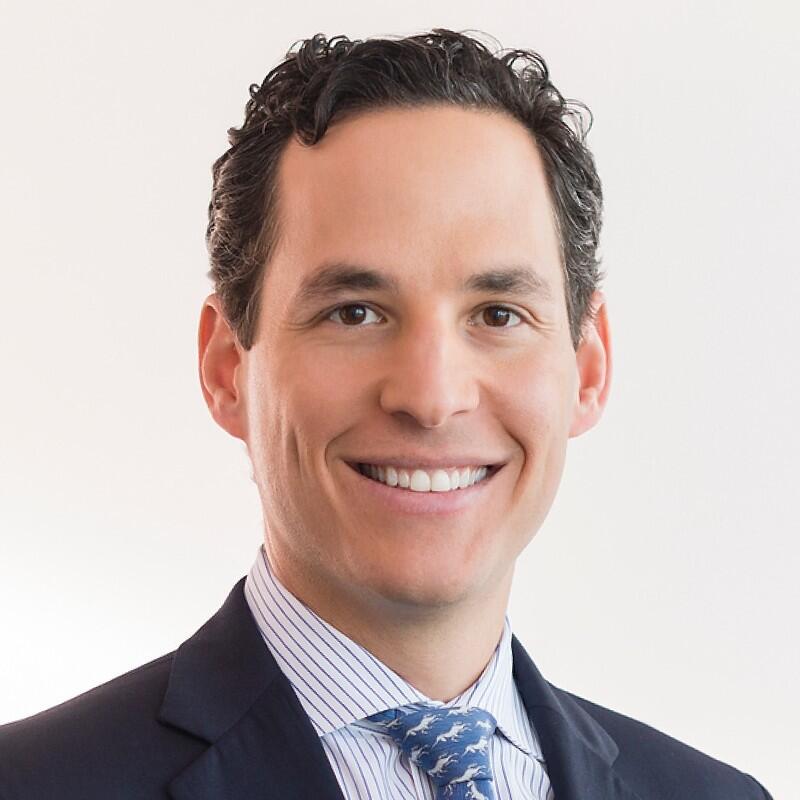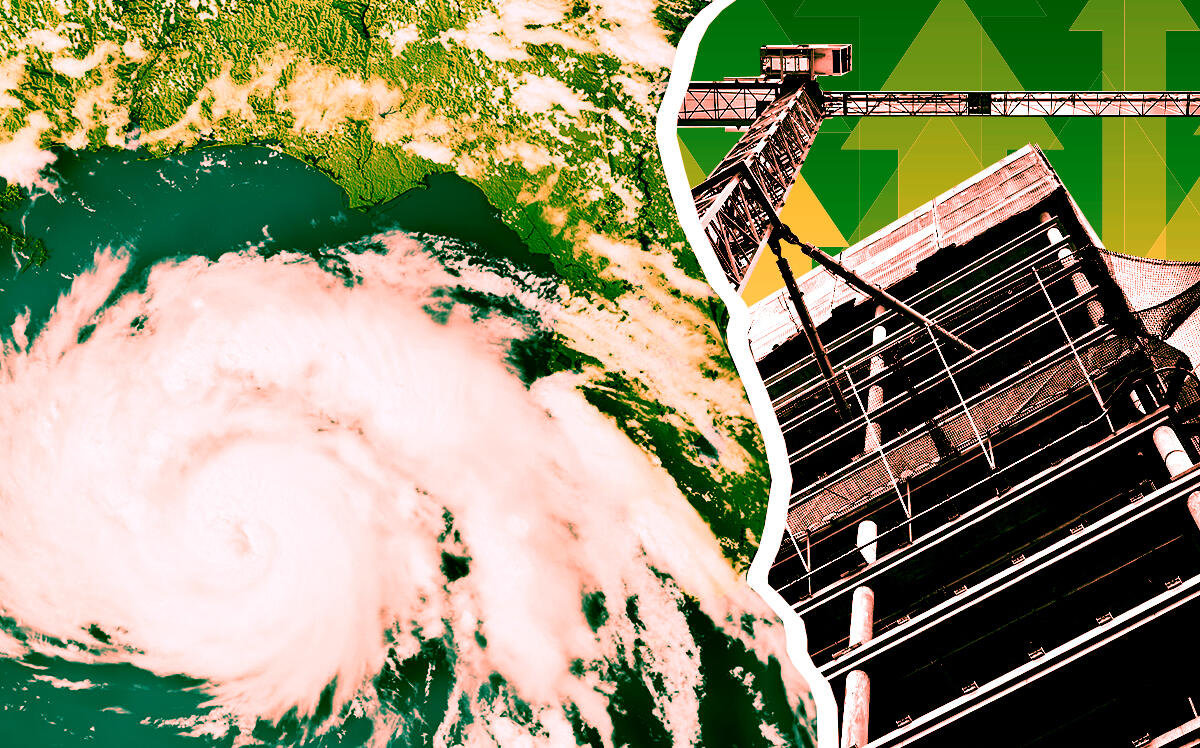(Photo Illustration by The Real Deal with Getty Images)
Amid South Florida’s development boom, shell construction contractor L & R Structural has had plenty of work. The firm is slated to start an Edgewater condominium tower and a pair of apartment buildings in downtown Miami early next year.
But L & R’s Richard Marquez’s mind isn’t at ease.
The company has secured some, but not all, of the workforce it needs to complete the 40-plus-story towers, Marquez said. As for materials, L & R can procure the concrete ahead of time, but that’s a commitment on paper, not a definite reality.

L&R Structural’s Richard Marquez (L&R Structural)
“Just because I secured it with my vendor,” he said, “doesn’t mean my vendor is going to be able to produce it at the same time I requested it.”
Over the past two-plus years, developers and construction firms have been dealing with a shortage of labor and materials, largely created by supply chain bottlenecks, pushing up development costs and sometimes stalling projects. Now, a new kink came along: Hurricane Ian.
Construction costs in Miami-Dade, Broward and Palm Beach counties are in for more hikes, experts say, even though the area avoided the storm’s wrath. The Category 4 hurricane pummeled southwest Florida, just as some materials’ prices were beginning to stabilize or drop. Costs had grown 25 to 35 percent during the pandemic in some cases.
On top of that, a handful of railroad bridges on the west coast of Florida that transport building materials were damaged, forcing suppliers to use trucks, which is more expensive.

Integra Investments’ Nelson Stabile (LinkedIn)
“Before the hurricane, I was somewhat hopeful for 2023,” said developer Nelson Stabile, president of the Builders Association of South Florida. “But now, after the hurricane, we will see some upward pressure on the costs.”
Stabile, a principal at Miami-based Integra Investments, said the firm locked in pricing on appliances, kitchen cabinets and flooring for a rental project in Biscayne Shores. Electrical gear and elevators are also taking longer than usual to secure.
But labor is — and will be — the biggest challenge, he and others said.
“Definitely we are concerned,” said Marquez, a vice president at L&R. “The only thing you can really do is either match or incentivize the workers’ [pay] to either maintain them here or attract other personnel from other areas.”
The overruns won’t blanket the industry, but will depend on factors that include a project’s stage of development, experts said. Some dispute that further increases will result from Ian.

Attorney David Haber (LinkedIn)
Still, uncertainty surrounds not just the cost of materials and availability of labor, but also the price of insurance premiums on commercial property, and builders’ risk policies, the experts said. Premiums already had been steadily increasing.
“If they already contracted with contractors, it will not [impact them],” said David Haber, a Miami-based real estate and construction law attorney. “If they are about to go into contract, it will.”
Double whammy
On Sept. 28, Ian made landfall at Cayo Costa with 150 mile-per-hour winds and brought up to 15 feet of storm surge, killing more than 120 people. Fort Myers Beach, Cape Coral, Naples, Sanibel Island, Pine Island and nearby areas were especially impacted. The storm then moved through central Florida, also flooding inland cities.
The insured property damage will exceed $60 billion, according to the Insurance Information Institute, a New York-based industry association.
As southwest Florida rebuilds, South Florida will feel a double whammy on materials and labor supply. Construction workers in South Florida have already started to take jobs on the west coast, but it’s not yet clear how many will temporarily move.

Gus Cabrera of the Latin Builders Association (LBA)
The immediate need is for contractors that can shore up roofs and other portions of buildings that otherwise withstood Ian, said Gus Cabrera, president of Coral Gables-based Latin Builders Association. Then, at least a year from now, rebuilding will begin on structures that Ian toppled or washed away, prompting a second wave of local workers to head to the Gulf Coast.
Some of the battered areas “had that nostalgic, old-Florida feeling” but will likely be rebuilt under more stringent codes, said Cabrera, who vacationed on the Gulf Coast. “It’s difficult for me to think those will come back in the same state as before.”
A lot of insurance money will be dispersed in southwest Florida, said attorney Haber. And when property owners have gaping holes in their roofs, who would haggle about pricing?

Attorney Ralf Rodriguez (Cozen)
Yet, finding housing for contractors in southwest Florida after the hurricane’s destruction could be difficult, said Ralf Rodriguez, a construction law attorney based in Miami. Still, it’s an opportunity for smaller contractors who can’t compete with big ones in South Florida.
Miami’s high housing costs may play a role. Both Miami and Cape Coral, in heavily hurricane-battered Lee County, experienced a rent increase of more than 21 percent in August, year-over-year, according to the Waller, Weeks and Johnson Rental Index. But the average Miami rent hit $2,910 that month, more than Cape Coral’s $2,186.

Alta Developers’ Raimundo Onetto (LinkedIn)
Developer Raimundo Onetto, whose project pipeline includes a 35-story, 400-unit apartment tower in downtown Fort Lauderdale, isn’t concerned about the effects of the hurricane on his workforce. His Miami-based Alta Developers has been working with the same group of contractors and subcontractors for 15 years.
“They are not going to risk a long relationship because they are going to have a better job in Tampa or Fort Myers,” Onetto said.
Based on conversations with general contractors, he knows cost hikes for materials are coming. He has heard a gamut of reasons: shipping issues, manufacturers are losing workers to better-paying jobs at Amazon. And, after all, the pandemic and the supply-chain bottlenecks it brought aren’t over. Yet, Ian hasn’t been among the reasons, Onetto said.
If past hurricanes are a benchmark, material shortages are expected. Demand would stretch from windows and doors to appliances and sand, which is mixed with cement, sources said.
“The reality,” said Cabrera, of the Latin Builders Association, “is the material demand for reconstruction in southwest Florida will come at a cost for other parts of Florida — the parts that are active.”
Insuring for disaster
Developers already had been dealing with challenges securing insurance for new projects prior to the hurricane, attorneys and brokers say. That will likely get worse when carriers adjust pricing next year, taking the hurricane and other natural disasters into account. Lenders typically require insurance, unless it’s raw land.
Insurance issues led to a delay in an office sale in Boca Raton, and other deals took longer as clients had to switch lenders to close, due to the inability to bind an insurance policy as the storm approached.
Ryan Garzon, a partner at Keyes Coverage Insurance Services, said the reinsurance rate has more than doubled since before Covid. Commercial tenants with gross leases are the most vulnerable.
“Come January, there’s going to be massive increases. It will be tough for the next three or few years, unless we have another storm,” he said, in which case it will be more expensive and harder to find insurance for a longer period of time.
Property owners are even asking their lenders to accept limited types of insurance, including windstorm, to help them save on policies, said commercial broker Jonathan de la Rosa of Marcus & Millichap.
Rising insurance rates have become a “systemic problem” affecting cash flow for owners and buyers, said commercial broker Tony Arellano of Dwntwn Realty Advisors. Policies that used to cost 80 cents to 90 cents per foot a few years ago now cost about a dollar more. Multifamily properties are more sensitive to insurance increases, compared with retail and office.
“Insurance costs went up 8 or 10 percent every year for the last few years,” he said. “We don’t anticipate costs to ever go down.”
Remedies elusive
Some developers and general contractors have come up with ways to work around rising construction costs and supply chain issues. Others are resorting to litigation as a means to resolve delays, attorneys say.

Mark Migdal + Hayden’s Etan Mark (LinkedIn)
Etan Mark, a lawyer and partner with Mark Migdal + Hayden, said it’s more effective for contractors and subcontractors to work in provisions that protect them from cost increases for materials, than to sue.
“Right now, most developers are sophisticated enough to know that if you think it’s going to take three months for inspections, you budget for nine months,” he said. “The world moves quickly, and it’s very hard to predict what the next ‘force majeure’ act is going to be.”

LKLSG’s Erin Bohannon (LKLSG)
Attorney Erin Bohannon of the commercial law firm LKLSG, is seeing an increase in pre-litigation disputes, and agrees that price escalation clauses are key. “That’s really how developers, general contractors and subcontractors can protect themselves, by being proactive,” she said.
Additional construction costs post-Ian could come as the industry also deals with high interest rates. The Federal Reserve is expected to keep raising rates this year in an effort to curb inflation.
Something has got to give at some point, Cabrera said. Local governments could lower property taxes, but eventually state lawmakers might have to chime in as well, he said.
As for Marquez, his L & R is used to dealing with caps on the amount of concrete it can purchase from vendors, much like the caps on water bottle sales at grocery stores.
“Until the vendors tell us there is no more reason to worry, and everything has been corrected in the market,” he said, “you are absolutely worried.”

